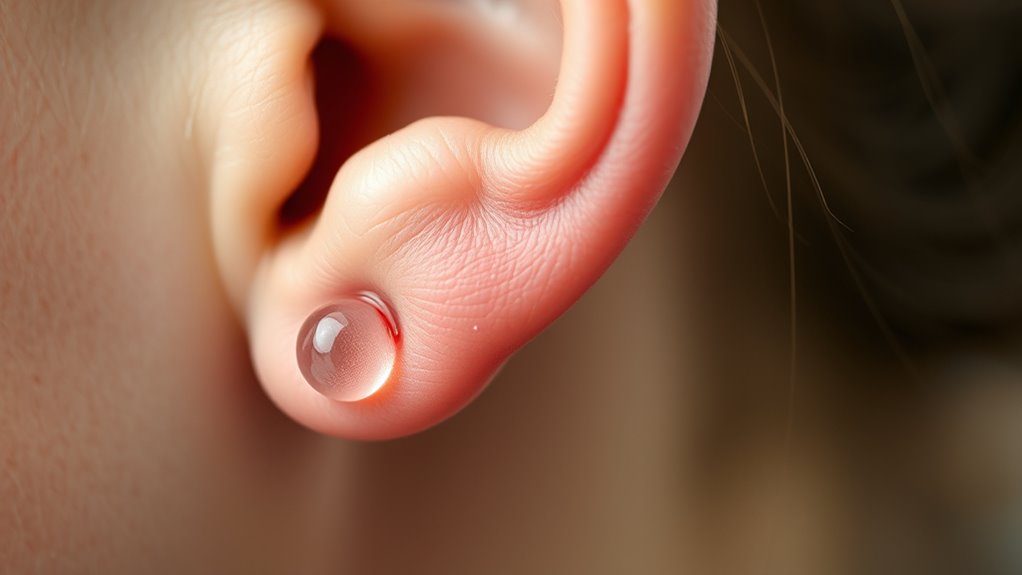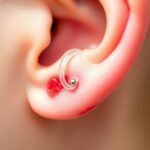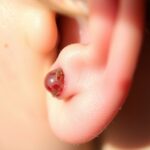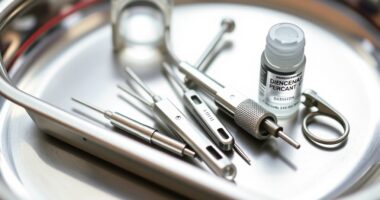If your tragus piercing has issues like pain, swelling, or signs of infection, start by keeping the area clean and avoiding unnecessary touching. Use hypoallergenic jewelry and cold compresses to reduce swelling, and watch for any signs of allergic reactions or keloids. Proper aftercare and gentle cleaning are key, but if problems persist, consulting a professional can help you understand the best course of action. Keep going to find out more solutions.
Key Takeaways
- Identify signs of infection such as redness, swelling, warmth, and discharge, and seek professional treatment promptly.
- Use hypoallergenic jewelry and cold compresses to reduce allergic reactions, swelling, and tenderness.
- Maintain proper hygiene with recommended cleaning routines and avoid touching or manipulating the piercing unnecessarily.
- Prevent scar tissue or keloids by using silicone gel sheets and avoiding trauma or irritation to the area.
- Avoid harsh chemicals and water exposure, and promptly address persistent discomfort or abnormal tissue growth with professional advice.
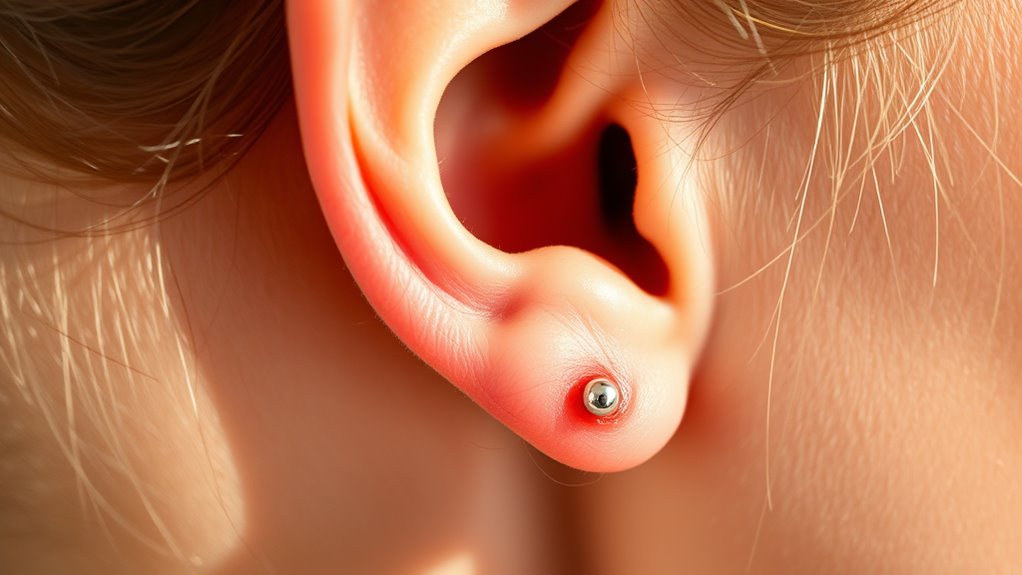
Have you ever experienced discomfort or pain in your tragus and wondered what’s causing it? If so, you’re not alone. Many people face issues after piercing or even due to natural sensitivities. Understanding the common causes and how to address them can make a significant difference in your healing process. One of the most effective ways to manage tragus troubles is to follow proper healing tips, which include keeping the area clean, avoiding unnecessary touching, and using recommended aftercare products. These steps help reduce irritation and promote faster healing. Equally important is infection prevention. An infected tragus can cause persistent pain, swelling, redness, and even pus. To prevent this, always wash your hands thoroughly before touching your piercing, avoid submerging your ear in pools or lakes, and steer clear of harsh chemicals or irritants like hair sprays or perfumes near the area. Maintaining a clean environment and being gentle with your piercing minimizes the risk of bacteria entering the wound. If you notice any signs of infection, such as increased redness, warmth, or discharge, it’s essential to seek professional advice promptly. Over-the-counter antiseptic solutions can help, but sometimes antibiotics are necessary, so don’t delay consulting a healthcare provider.
Additionally, understanding the role of environmental adaptation in the development of complications can help you make more informed decisions about your piercing care.
Another common complication involves swelling or tenderness, which can result from minor trauma, irritation from earrings, or allergic reactions. To tackle this, you should avoid changing earrings too soon and opt for hypoallergenic jewelry, especially if you have sensitive skin. Applying cold compresses can help reduce swelling, and taking over-the-counter pain relievers may ease discomfort. Be cautious not to over-clean or over-manipulate the piercing, as this can worsen inflammation. If swelling persists or worsens, it’s best to see a professional for assessment. Sometimes, keloid formation or scar tissue can develop if the area isn’t cared for properly, which can be frustrating. Preventative measures include using silicone gel sheets or corticosteroid treatments if advised by your doctor. Regularly inspecting your piercing and maintaining good hygiene are your best defenses against these issues.
Frequently Asked Questions
How Long Does a Tragus Piercing Typically Take to Heal Completely?
Your tragus piercing usually takes about 6 to 8 weeks to heal completely, but the healing timeline can vary depending on your piercing aftercare. During this period, it’s essential to keep the area clean and avoid touching it unnecessarily. Proper aftercare helps prevent infections and promotes faster healing. Be patient and consistent with your aftercare routine, and you’ll see your tragus heal well within the typical timeframe.
Are There Any Natural Remedies to Reduce Tragus Piercing Swelling?
Think of swelling as a fire that needs gentle tending. You can use natural herbal remedies like chamomile or aloe vera to help soothe the area. Applying a cold compress also acts as a calming wave, reducing inflammation. Combine these soothing techniques with gentle, clean care to ease swelling naturally. Just remember, if swelling worsens, it’s best to consult a professional to prevent complications.
Can I Change My Tragus Jewelry Within the First Week?
You should wait at least a week before changing your tragus jewelry to reduce piercing complications. During this time, your piercing needs to heal, and switching jewelry too early can cause irritation or infection. When you do change jewelry, choose styles that are safe and comfortable. Rushing this process might lead to swelling or other issues, so it’s best to follow your piercer’s advice and opt for jewelry that minimizes complications.
What Are Signs of a Severe Infection in Tragus Piercings?
When worrying about signs of infection, look for persistent redness, swelling, or pain that worsens instead of improves. You might notice pus or a foul odor, and your piercing could feel hot or tender. These piercing complications signal a severe infection. If you experience these signs, seek medical advice immediately. Prompt action helps prevent further damage and guarantees proper healing, so don’t ignore persistent or worsening symptoms.
Is It Safe to Swim With a New Tragus Piercing?
Swimming safety with a new tragus piercing depends on healing progress. Usually, it’s best to avoid swimming until you’re sure there’s no signs of infection or irritation. Water can introduce bacteria, risking infection. If you decide to swim, consider covering the jewelry with a waterproof barrier or delay jewelry exchange until fully healed. Always follow your piercer’s advice to ensure safe healing and avoid complications.
Conclusion
When you face tragus piercing complications, don’t let setbacks get you down. Keep a cool head, follow proper aftercare, and address issues promptly. Remember, every problem has a solution if you’re willing to roll up your sleeves and stay persistent. Sometimes, you just have to weather the storm to enjoy the rainbow. With patience and care, you’ll turn those troubles into triumphs, making your piercing journey smoother and more rewarding.

